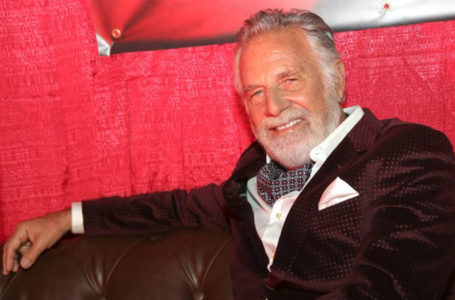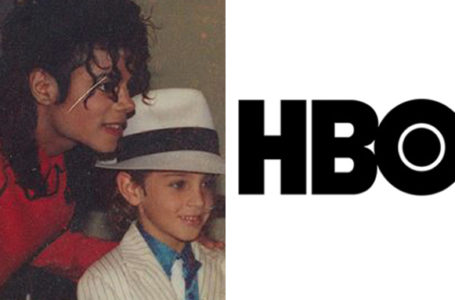Jim Carrey was sitting in a hotel room four years ago, flipping channels on the proverbial idiot box, when he stumbled across something truly, sublimely dumb.
Rewatching one of his earliest and silliest movies, 1994’s “Dumb and Dumber,” Carrey was hit with a sudden wave of fond feelings for the over-the-top buddy comedy that had helped rocket him to stardom. He picked up the phone and called Peter Farrelly, who had written and directed the movie with his brother, Bobby, to talk about making a follow-up.
“Jim called me out of the blue and said, ‘I want to do that kind of movie — that’s exactly what I want to do,'” Peter Farrelly, 57, remembered with Bobby, 56, on a recent afternoon. “I said, ‘Done!'”
This wasn’t the first time someone had proposed bringing “Dumb and Dumber’s'” dimwitted best friends, Lloyd Christmas (Carrey) and Harry Dunne (Jeff Daniels), back to movie theaters. Indeed, given the original film’s $247-million worldwide box office haul and still-beloved status, it didn’t take a Mensa-level genius to see the possibilities. But as it turned out, getting that sequel onto the screen proved difficult to a degree that, in an industry increasingly focused on revisiting well-known franchises, some might find dumbfounding.
For “Dumb and Dumber To,” which arrives Nov. 14 — nearly 20 years to the day after the first movie opened — the road to the big screen has been a long, strange trip involving two major studios, a misbegotten prequel, an ugly lawsuit and an untold number of stops and starts. “I always knew it was going to happen,” Peter Farrelly said, “but there were many, many, many days when it looked like it might not.”
It remains to be seen, of course, how the movie will fare with audiences — 20 years is a long time to wait for the next installment in a franchise that’s not called “Star Wars” or “Indiana Jones.” But after so many twists and turns, Carrey, 52, is just glad the film finally came to fruition.
For the actor, whose career has had its own share of twists and turns, the difficulties in making “Dumb and Dumber To” highlight what he sees as a shift toward a “more corporate, more impersonal, less maverick” culture in today’s film business. “There’s been a constant feeling of, ‘Why isn’t anyone making this movie?'” Carrey said, adding, “It got done despite a whole lot of cowardice all the way around.”
Made for $16 million, the original “Dumb and Dumber” turned the previously unknown Farrelly brothers into a powerful comedic brand, sparking a run of influential movies like 1996’s “Kingpin” and 1998’s “There’s Something About Mary” that helped blaze the trail for other good-naturedly filthy comedies such as “American Pie” and “The 40-Year-Old Virgin.”
The story of Lloyd and Harry’s cross-country quest to return a briefcase full of money to its owner (who they mistakenly assume is named “Samsonite”), “Dumb and Dumber” proved an instant hit on its release, holding the top spot at the box office for four straight weeks. Despite middling reviews, in the years since it has acquired the status of a cult classic, at least among those with a taste for sight gags, slapstick and gleefully crude jokes, including arguably the most famous toilet scene in cinema history. (In a poll this year, Rolling Stone magazine readers voted it the ninth funniest movie of all time.)
The sequel — which, like its predecessor, is rated PG-13 — sets Lloyd and Harry on another road trip, this time to find Harry’s long-lost daughter in the hopes that he can get a new kidney. The two are 20 years older but otherwise utterly unchanged right down to Lloyd’s chipped front tooth and Harry’s frizzy, unkempt hair. The film’s tone is set in the first few minutes with a scene involving a yanked-out catheter and goes from there.
“We have not gained one ounce of intelligence,” said Daniels, 59, who started work on “Dumb and Dumber To” just days after earning an Emmy for his performance as Will McAvoy on HBO’s “The Newsroom.”
“I got the Emmy on Sunday night and Tuesday morning I was showing butt crack,” Daniels said. “To be honest, it was frightening how fast it all came back.”
Their coming-out film
Two decades ago, when they signed on to direct the first “Dumb and Dumber,” the Farrelly brothers — who hailed from Rhode Island and whose biggest credit at that point was co-writing an episode for “Seinfeld” — had never so much as set foot on a movie set. So many actors passed on the script that, in the hopes of getting agents to read it, the Farrellys retitled it “A Power Tool Is Not a Toy.” “That sounded hipper and edgier,” explained Peter Farrelly.
Even after Carrey signed on, there were serious doubts about the prospects for a comedy from a pair of first-time directors aimed largely at the sensibilities of adolescent boys.
“The night before the wardrobe fitting, I had three agents on the phone and two of them were saying, ‘You cannot do this movie,'” Daniels remembered. “They said, ‘You’re a serious actor. We’ve got you on the Oscar trail. We’re going to get you out of this.'”
While audiences ultimately embraced the movie — making it Carrey’s third major hit of 1994, after “Ace Ventura: Pet Detective” and “The Mask” — critics and other cultural cognoscenti were largely dismissive, regarding it as some sort of cinematic symbol of the nation’s intellectual decline. The Washington Post called the film “an execrable catalog of doody jokes,” while the New York Times sniffed that it “fully lives up to its name.”
“Right after the movie came out, I remember George Will, Sam Donaldson and a couple of other people were on a Sunday news show talking about ‘the dumbing of America,'” Bobby Farrelly said. “They were having this haughty discussion, and it occurred to me that not one of them had seen the movie.”
The notion of making a follow-up to “Dumb and Dumber” initially arose in the early 2000s. (A 1995 cartoon spinoff had proven short-lived, running just 13 episodes.) The Farrellys, Carrey and Daniels were all game, but at the time Carrey’s schedule was packed. Eager to get a movie out, the studio behind the first film, New Line, decided instead to make a prequel, 2003’s “Dumb and Dumberer: When Harry Met Lloyd,” without the involvement of the original stars or the Farrellys. The movie flopped, grossing just $26 million.
In 2011, with Carrey, who had long resisted making sequels, now eager to revisit “Dumb and Dumber,” the Farrellys brought a script to New Line and its parent company, Warner Bros. “We figured everybody would flip,” Peter Farrelly said. “But when we gave it to the studio, there was a little silence.”
Studio executives were concerned that, after such a long time, audiences might not be so familiar with the original film. “They said, ‘You’ve got a lot of references to the first movie — what if people don’t remember those things?'” Peter Farrelly said. “They were asking us to cut all the references to the original out. We didn’t want to do it.” For months, the project remained stuck in limbo.
Carrey soon grew frustrated with the executives’ apparent lack of enthusiasm. “Every week someone at Warner Bros. would say, ‘We’re going to have a green-light meeting about it,'” he said. “Finally I said, ‘You’re not serious. Goodbye.'” In mid-2012, the actor dropped out of the film, and New Line and Warner Bros. agreed to let the Farrellys shop it elsewhere.
With the project’s future highly uncertain, the independent production company Red Granite Pictures — which produced Martin Scorsese’s “Wolf of Wall Street” — stepped in to try to put the pieces back together. Finally, in June 2013, a deal was forged for Red Granite to finance the sequel at a budget of $38 million, with Universal now distributing the movie domestically and Warner Bros. retaining a piece of the back end.
“There were a lot of moving parts,” said Joey McFarland, who co-founded Red Granite with Riza Aziz. “To distribute a sequel with a studio other than the one that owned the first installment — that’s a real anomaly.”
Just weeks after the project was revived, Red Granite filed suit against original “Dumb and Dumber” producers Brad Krevoy and Steve Stabler, seeking a declaration that the two were not owed any fees or credits on the sequel. Krevoy and Stabler filed a counterclaim, contending they were contractually entitled to a minimum of $400,000 in front-end compensation and accusing Red Granite (whose funding comes from sources in Asia and the Middle East) of financing their movies through racketeering.
In July of this year, the dispute was quietly settled. Though both sides have stayed mum on the terms, Krevoy and Stabler are credited as executive producers on the sequel. “In the end, it all worked out for everyone,” McFarland said. “There are no grudges.” Of the now-dismissed racketeering claim, Aziz said, “Whatever pot shots come our way, we just take it as a sign we’re doing something right.”
Blurring the films
One upside of the long delay in getting “Dumb and Dumber To” to the screen is that the Farrellys — along with co-writers Bennett Yellin, Mike Cerrone, Sean Anders and John Morris — had that much more time to get the jokes just right (or just wrong, depending on how easily offended you may be). Though gregarious and easygoing in person, the Farrellys take their comedy quite seriously and have always bristled at being tagged as merely purveyors of “grossout” humor.
“We didn’t want this to be ‘Dumb and Dumber Lite,'” Peter Farrelly said. “We wanted it to be as good as the first movie. Our goal is that after you see both movies and a couple of years have passed, they will blur together.”
Still, after 20 years of fans endlessly quoting their favorite scenes from the original film (Mitt Romney, for one, recently referenced Carrey’s line “So you’re telling me there’s a chance” in relation to his future presidential prospects), the Farrellys know that meeting expectations with the sequel will be a tall order. Their recent box-office track record has been somewhat spotty — their last comedy, 2012’s “The Three Stooges,” grossed $44 million — though they are quick to point out that, with the possible exception of 2003’s “Stuck on You,” all of their movies have made money.
“There will be people who will be angry, no matter what: ‘Why did you have to do another ‘Dumb and Dumber’? That’s our baby!'” Peter Farrelly said. “Then there will be a lot of people who will be very happy, and a lot of people in between. One thing that’s clear at this point in our career is that we’re not for everyone.”
“We do comedies where Jeff Daniels takes Turbolax and goes to the bathroom — and we show it,” Bobby Farrelly added dryly. “We’re ripe to be picked on.”
Carrey, who hasn’t headlined a major comedy hit since 2008’s “Yes Man,” makes no bones about his hopes for the film. “I want it to be a success for everybody: for me, for the Farrellys, for Jeff, for the audience — and oh, OK, for the executives too,” he said.
And if it works, he has a plan. “I told the Farrellys we should do a ‘Dumb and Dumber’ once every 20 years — and the next one should be called ‘Gum and Gummer.'” He laughed. “You’ve got to beat people to the joke.”
=====
josh.rottenberg@latimes.com
Copyright © 2014, Los Angeles Times





